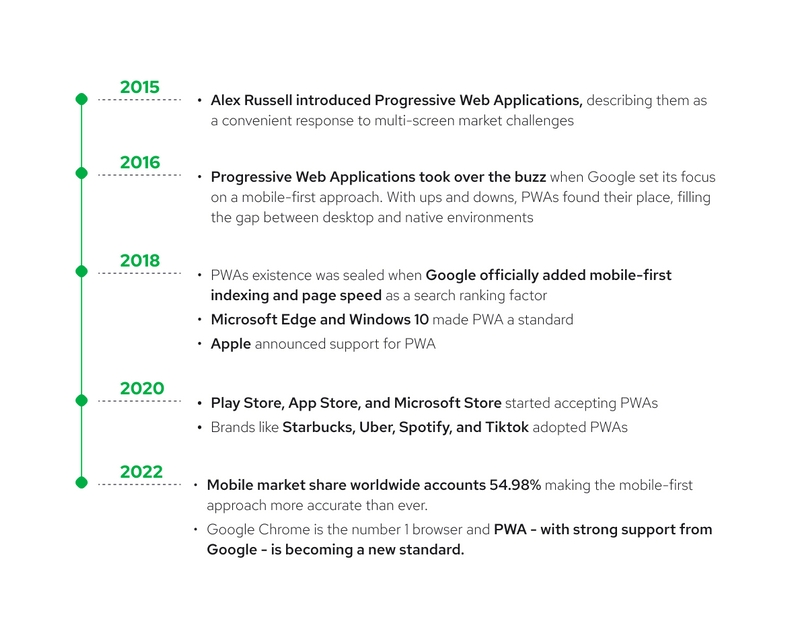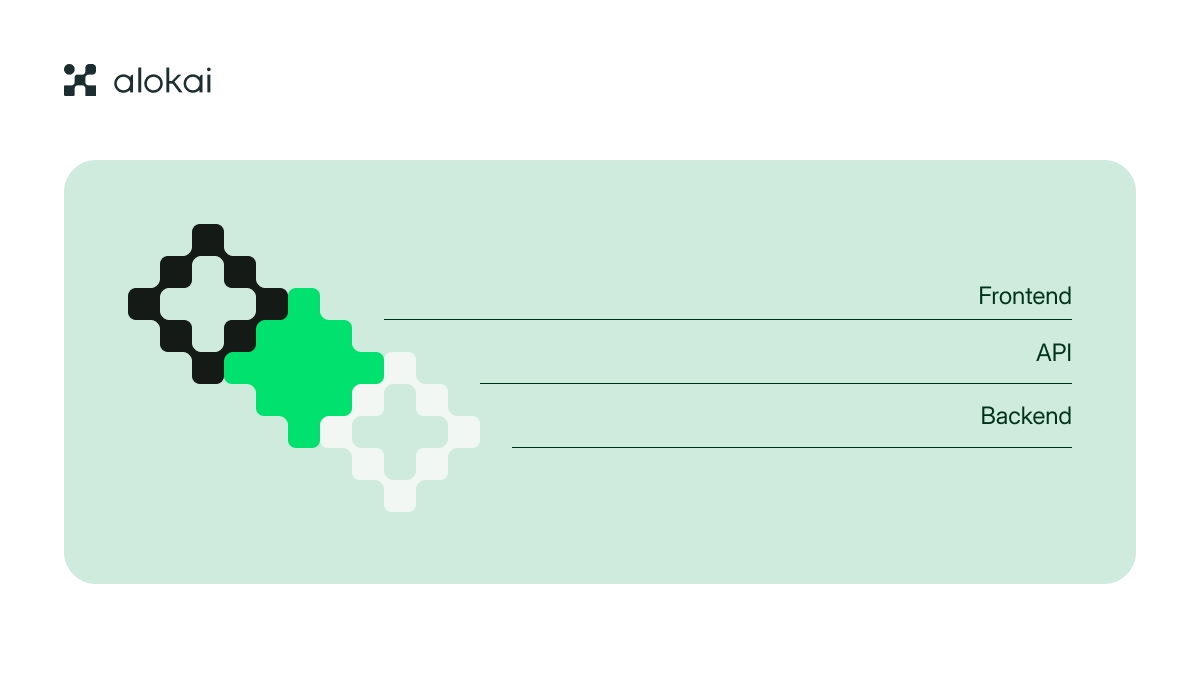As the ecommerce landscape evolves, staying informed about the latest technology trends is crucial for online businesses aiming to stay competitive. This article delves into the key ecommerce tech trends shaping the online shopping world in 2024. From artificial intelligence transforming customer experience to progressive web apps enhancing mobile commerce, we uncover the innovations that are not just trends but catalysts for growth in digital retail. Explore the future of ecommerce and how these trends can propel your business forward.
Key takeaways
- AI and machine learning are transforming ecommerce by delivering personalized shopping experiences, optimizing inventory management through predictive analytics, and providing enhanced customer service with sophisticated chatbots.
- Progressive Web Apps (PWAs) are elevating mobile commerce by providing a native app-like experience without requiring a download, offering superior speed, accessibility, and integration with mobile features that contribute to increased sales.
- Recent innovations in AR and VR technologies enhance online retail by enabling virtual try-ons and interactive showrooms, improving customer engagement and confidence, potentially increasing sales, and fostering loyalty.

Revolutionizing online shopping with AI and machine learning
Artificial intelligence and machine learning are no longer buzzwords; they are the driving force behind the ecommerce revolution. With a market value soaring to $45.72 billion by 2032, these technologies are enhancing online shopping experiences and pivotal in optimizing inventory management and steering business growth.
From crafting highly personalized shopping experiences that can skyrocket revenues by 40% to deploying generative AI for creating dynamic visual content, AI is the maestro conducting the symphony of digital retail.
Intelligent product recommendations
Diving deeper into the AI revolution, intelligent product recommendations stand out as a game changer. By scrutinizing customer data and past purchase history, AI-powered engines suggest relevant products that amplify customer engagement and sales conversions.
This virtual showcase of personalized suggestions simplifies the personalized shopping experience and boosts conversion rates, proving that tailored recommendations are thoughtful and profitable.
Predictive Analytics for Demand Forecasting
On the flip side of the AI coin, we have predictive analytics mastering the art of demand forecasting. By foreseeing future trends and customer demands, machine learning becomes an essential tool for ecommerce businesses, enabling them to:
- Manage inventory with unprecedented efficiency
- Dodge the dreaded stockouts
- Keep the shelves stocked
- Ensure that businesses don’t lose sales due to inventory shortages.
This clairvoyance keeps the shelves stocked and ensures that businesses don’t miss a beat in sales due to inventory shortages.
Enhanced Customer Service with Chatbots
Chatbots, the intelligent virtual assistants, are redefining customer service norms by:
- Managing 70% of online conversations
- Providing immediate assistance
- Utilizing natural language processing
- Transforming the online shopping experience into an interactive and customer-centric journey.
Generative AI takes this a step further, allowing chatbots to tackle more complex queries and provide real-time updates, elevating the standard of customer service.
The emergence of progressive web apps (PWAs) in mobile commerce

As the digital stage evolves, so does the role of Progressive Web Apps (PWAs) in mobile commerce. Offering a native app-like experience without the need for an actual download, PWAs are becoming the cornerstone of mobile shopping alongside traditional mobile apps. With an impressive 70% of mobile commerce sales expected to occur through devices supporting PWAs in 2024, it’s clear that these apps are not just passing trends; they’re redefining accessibility and engagement in the mobile world.
Speed and accessibility
The magic of PWAs lies in their seamless and responsive user experiences. Faster load times are crucial for customer retention, so these apps ensure every interaction is a breeze.
Their ability to function offline further cements their position as a pillar of mobile commerce, offering users continuous access to online business and ecommerce platforms on their mobile devices, regardless of their connectivity.
Integration with Mobile Features
PWAs are not just fast and accessible; they are also astutely integrated with a device’s native features such as push notifications. This integration ensures that the shopping experience is consistently stellar across many devices and screen sizes, facilitating effective marketing campaigns and fostering brand loyalty.
Augmented and virtual reality: A new dimension in online retail
Stepping into the future, Augmented Reality (AR) and Virtual Reality (VR) are opening new dimensions in online retail. These immersive technologies are not mere gimmicks but powerful tools that enable in-depth product visualization and virtual try-ons, creating compelling shopping journeys that enhance customer engagement and foster brand loyalty.
As customers seek a bridge between digital convenience and the tactile satisfaction of offline shopping, AR and VR stand ready to deliver an unparalleled online shopping experience.
AR-powered virtual try-on
The fashion industry, in particular, is reaping the benefits of AR-powered virtual try-ons. Customers can now digitally try on clothes, reducing the need for physical fitting rooms and significantly cutting down on product returns.
This tangible sense of reality when making online purchases enhances customer confidence in their purchase decisions and paves the way for increased engagement and brand loyalty in an online store.
VR showrooms and product demos
In VR, showrooms and product demonstrations offer customers a detailed and interactive view of products, akin to walking through a physical store without stepping outside their homes. This level of interactivity not only improves the customer’s understanding of the product but is also expected to boost ecommerce sales significantly.
Streamlining payments: Secure and diverse options
In the digital marketplace's checkout lane, streamlined payment options are essential for a frictionless shopping experience. The ability to choose from secure payment gateways, including credit and debit cards, e-wallets, and ‘Buy Now, Pay Later’ services, can significantly improve customer experience and increase conversion rates.
With the introduction of these diverse payment options, ecommerce businesses ensure that the last step of the shopping journey is as smooth as the first.
Frictionless checkout processes
The key to a frictionless checkout is simplicity and security. Here are some ways to achieve this:
- Offer one-click or express checkout options
- Implement secure authentication methods
- Streamline the process to make it swift and hassle-free for users
- Remove obstacles and ensure transparency in pricing By following these steps, ecommerce platforms can enhance the overall shopping experience and fortify customer trust.
Security measures for payment transactions
When securing online transactions, trust indicators like SSL certificates and trust seals play a pivotal role in reassuring customers about the safety of their information. In the face of threats like DDoS attacks, having a robust action plan to restore retail platforms quickly is crucial for maintaining consumer trust and minimizing disruption.
Leveraging social Commerce for enhanced engagement
Social commerce is redefining the ecommerce landscape by integrating the social aspect of shopping with the convenience of online purchasing. As more consumers express their anticipation for making purchases directly on social media platforms, businesses are capitalizing on this trend by creating targeted marketing campaigns and leveraging the power of influencer partnerships to drive engagement and sales.
Shoppable posts and influencer partnerships
Shoppable posts have become a staple of social commerce, allowing customers to purchase items with a single tap on their social media feeds. Platforms like Instagram are leading the charge, offering features that create a seamless and immersive storefront experience, increasing the likelihood of direct sales and enhancing customer engagement.
Innovations in supply chain management systems
The backbone of any ecommerce business is its supply chain, and with the latest innovations, management systems are becoming more sophisticated and efficient. Real-time tracking and analytics and automation in warehousing and logistics are reshaping how ecommerce businesses handle their inventory and fulfill orders.
Real-time tracking and analytics
The power of real-time data is revolutionizing the supply chain, allowing businesses to make informed decisions and significantly improving customer satisfaction. With the help of supply chain visibility software, companies are proactively managing their inventory and ensuring that customers receive their orders on time.
Automation in warehousing and logistics
Automation, powered by AI, streams warehouse operations by performing repetitive tasks more efficiently and accurately. This level of automation offers several benefits, including:
- Optimized workflows
- Reduced logistics costs
- Lower inventory levels
- Enhanced service quality
Sustainable practices in ecommerce
Sustainability is no longer an option but a necessity in ecommerce. With consumers becoming more environmentally conscious, businesses are adopting sustainable practices that align with consumer values. From green packaging solutions to eco-conscious shipping and fulfillment, these initiatives appeal to customers, reduce operational costs, and support long-term growth.
Green packaging solutions
To reduce environmental impact, ecommerce brands are turning to green packaging solutions. Companies minimize packaging waste by opting for recyclable materials and perfectly sized boxes. This shift towards sustainability is energy-efficient and helps reduce landfill usage, demonstrating a commitment to environmental conservation.
Eco-conscious shipping and fulfillment
Advanced supply chain management systems are enabling companies to:
- Calculate the carbon footprint of their activities and products
- Support eco-friendly business operations
- Automate invoicing
- Manage inventory
- Generate sustainability reports
With these tools, businesses are contributing to a greener future for ecommerce.
Composable commerce

In ecommerce, flexibility and innovation are paramount, and composable commerce is at the forefront of this revolution. By separating the UI from the business logic, businesses can select the best ecommerce technology for their needs, allowing for agile and innovative approaches to online retail.
This trend reduces operational costs and prepares businesses to quickly adapt to the ever-changing ecommerce trends and ecommerce technology trends landscape. Composable commerce enables companies to leverage a modular approach, where different components such as payment gateways, inventory management systems, and customer service tools can be independently integrated and updated as needed. This modularity ensures that businesses are not locked into a single vendor or technology stack, providing the freedom to innovate and scale efficiently.
Moreover, composable commerce supports a more personalized customer experience. By integrating various best-of-breed solutions, businesses can tailor their ecommerce platforms to meet specific customer needs and preferences, enhancing engagement and satisfaction. This approach also fosters a more resilient and future-proof ecommerce ecosystem, as businesses can seamlessly incorporate emerging technologies and trends without overhauling their entire system.
Essentially, composable commerce represents a paradigm shift in how ecommerce platforms are built and managed, offering unprecedented flexibility, scalability, and innovation potential. It empowers businesses to stay ahead of the curve, swiftly responding to market changes and delivering exceptional customer experiences.
Summary
As we reflect on the intricate tapestry of ecommerce technology trends, it is clear that the synergy of innovation and customer-centric design is shaping the future of online shopping. From AI-driven personalization to the immersive realms of AR and VR, each trend we’ve explored plays a crucial role in enriching the shopping experience. The culmination of these advancements presents a digital marketplace that is more intuitive, engaging, and sustainable than ever before. Embrace these trends with optimism, for they are the keystones that will support the soaring edifice of ecommerce in years to come.

Social media as a customer service channel
As an extension of its selling power, social media has also emerged as a vital customer service channel and a platform for customer relationship management. With customers seeking immediate responses, brands utilize automated messaging and AI-driven chatbots to manage inquiries and foster a positive reputation among consumers efficiently.
By building a community around their brand, businesses enhance customer loyalty and secure repeat business.